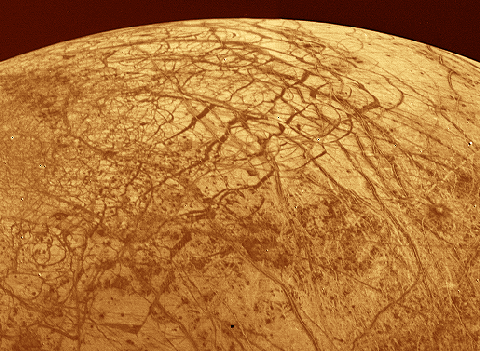Explanation: Voyager spacecraft images of Europa's surface, like the one above, are suggestive of sea ice on Earth. The criss-crossing dark streaks may indeed be cracks in its ice-covered surface caused by Jupiter's tidal stresses accompanied by the freezing and expansion of an underlying layer of water. This tantalizing prospect of oceans of liquid water beneath its frozen surface has helped make the smallest of the Galilean moon's of Jupiter a planned focus of the Galileo spacecraft's ongoing mission to explore the Jovian system. New Europa images and results from the Galileo mission were released today revealing details which further suggest that Europa's icy surface was once - and may still be - supported on slush or liquid water.
1999 2000 2001 2002 2003 2004 2005 2006 2007 2008 2009 2010 2011 2012 2013 2014 2015 2016 2017 2018 2019 2020 2021 2022 2023 2024 2025 |
Yanvar' Fevral' Mart Aprel' Mai Iyun' Iyul' Avgust Sentyabr' Oktyabr' Noyabr' Dekabr' |
NASA Web Site Statements, Warnings, and Disclaimers
NASA Official: Jay Norris. Specific rights apply.
A service of: LHEA at NASA / GSFC
& Michigan Tech. U.
|
Publikacii s klyuchevymi slovami:
led - okean - Evropa - KA Voyadzher - KA Galileo
Publikacii so slovami: led - okean - Evropa - KA Voyadzher - KA Galileo | |
Sm. takzhe:
Vse publikacii na tu zhe temu >> | |
